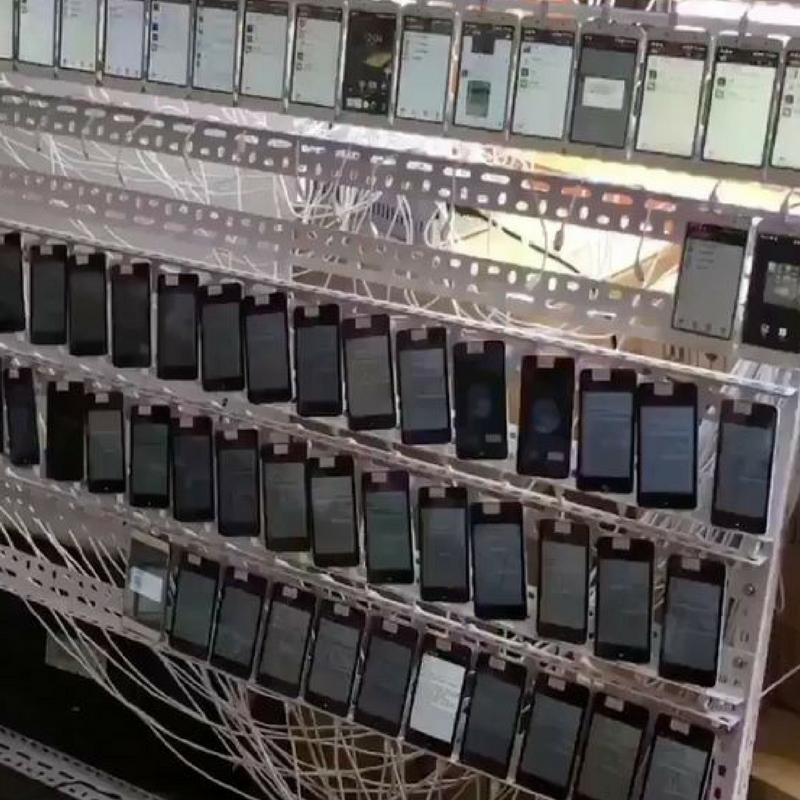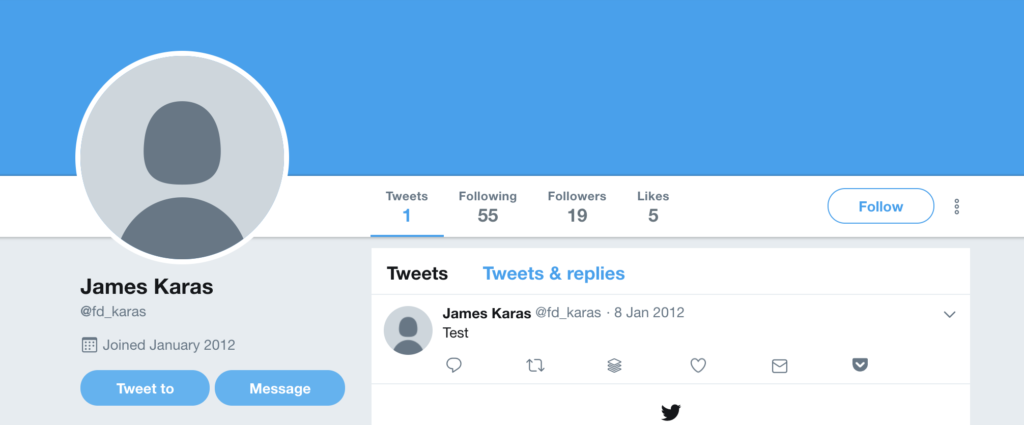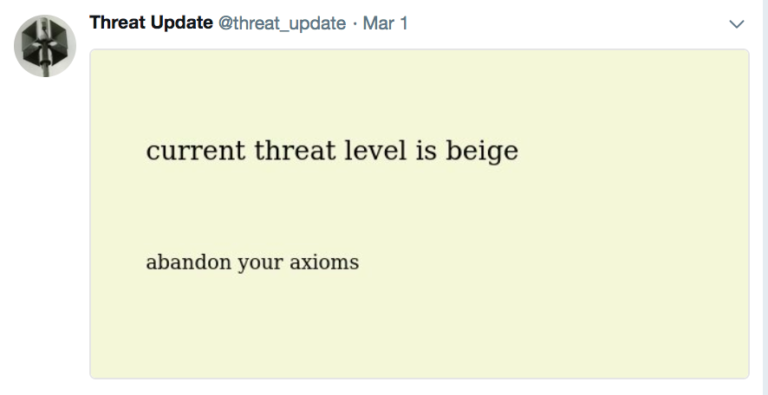Bots, bots, bots, here a bot, there a bot, everywhere a bot! — we keeping hearing about how Russian bots flooding our social media. But what is a bot really?
The short answer is this:

Bots are automated social media accounts — thousands of accounts run on thousands of phones controlled by a few people on a keyboard. They are not new to the social media scene.
They were originally created to game social media marketing. These arrays of phones were called click farms or botnets. Their services have been available for marketing almost since the inception of social media. Anyone could buy the services of a click farm. For a few dollars you can buy followers, likes, reviews for your product, and buzz – for example, studios used them to create online buzz about an opening movie.
With just a few key strokes the bot puppeteer can flood a social media platform with posts to drown out real people and create the appearance of a conversation that is completely fabricated.
How to Spot a Bot

Two types of classic bots – 3 honeypot bots and a dormant bot
Here are some classic bot characteristics. The oldest bot in the book is the honeypot, that cute girl just looking for love. If you see an account that looks at all like the 3 pictured here it’s pretty safe to assume it is a bot.
Now let’s take a look at some other indicators:
The handle – It’s a great deal of work to name thousands of bundles of bot joy. These days Russian bots are exhibiting a pattern of what they think is an American sounding name followed by 8 digits. Along with her classic honeypot photos, @Lana300064920’s handle indicates she is is probably a bot.
Profile picture – Since bots are banks of cell phones they can’t grab a selfie for a profile picture. Instead they steal, steal, steal. They steal pictures from stock photo sites, they steal real people’s profile pictures, they steal celebrities’ pictures, they steal pictures of people’s kids, they steal logos of sports teams.
If you suspect an account is a bot or a troll you can download the profile picture and use Google image search to do a little sleuthing. Often an image search will deliver one of two results. The original source of the photo will appear, the actual person’s social media profiles, the stock image site, or whatever website the photo was stolen from. If a photo has been used for numerous bot or troll accounts often those accounts will appear in the search results. In other words if the an image search turns up 5 twitter accounts with that same photo you have probably found a botnet.
And then there are the lazy bots who don’t bother to change their profile picture at all.
Creation date – Bots are often created to target a particular event in the news. An account named @jen23759737 created a week ago with a default profile profile picture tweeting heavily about the topic of the day is probably a bot.
Older bots are more valuable because newer accounts tend to be viewed with suspicion. Botnet creators will often create bots and leave them dormant to let them age before engaging them. Accounts like this James Karas account will sit dormant, occasionally following other accounts to gain followers. Once it has a date and follower count to lend it more credibility it will be dressed and deployed.

Superhuman tweet rate – Another indicator of a bot is they tweet at super human rates – because well, they aren’t human. They tweet thousands and thousands of tweets 24 hours a day. Even the biggest social media junkies sleep sometimes. They also tend to post the same cut and pasted tweets over and over. If you are checking a profile’s tweet rate be sure to check the “Tweets & replies” tab as well. Bots are usually used to reply to other people’s tweets to insert their message into the conversation.
There are people who use data analysis to identify botnets. You can learn a good deal about bots by reading their analysis. Two accounts that analyze and out bots on Twitter are @josh_emerson and @conspirator0.
What’s Being Done About the Bots?
So far not much. Twitter has the ability to identify the bots. As the Twitter bot hunters have demonstrated, people outside the company using basic data analysis can consistently identify botnets. Despite users complaining that they do something about them from back in the days when they were a mere marketing annoyance, the company has not made any significant moves to deal with the problem
Many people speculate if they got rid of the bots their user count would drop drastically. User count is one of the metrics of success for a digital platform. At this point the bots on Twitter are fooling no one about their user count.
Twitter has started doing occasional purges of suspected bot accounts. And it is like playing whack-a-mole. As soon as they delete accounts new ones are set up.
At this writing Twitter does not even have an option to report an account as a suspected bot. Users report and block bots as under the other options – posting spam, violence, targeted harassment, or hate speech, as appropriate.
How Is Russia Using Bots?
Putin’s agents use bots in primarily two ways. One – in much the same way bots have always been used on social media – to create buzz, to make it appear as if many, many people are talking about a particular topic and are talking about it in a particular way.
If you want to watch the narratives Putin’s bots and trolls are pushing visit Hamilton 68. This dashboard tracks the activity of hundreds of known Russian agent accounts on Twitter and creates graphs of their top talking points. It can seem confusing at first. A good way to start is just to look at “Top Hashtags” and “Top URLs”. The hashtags identify the talking points. The URLs identify the websites they are promoting.
The bots are also being used to deliver urls with malware. Never click on a link from an account that looks like a bot. The links are often to websites that insert malware into your browser or computer.
Putin’s primary goal in his active measures against the Unites States is to create division. His bots jump into both sides of online conversations with the express intent to provoke anger and hatred. If @Mike67493702 came out of no where calling you vile names, he’s probably a bot. Do not respond. Report and block.
Not All Bots Are Evil
All that said, not all bots are evil. Automated Twitter accounts are a tool. Tools are not inherently good or bad. A hammer can be used to build or to destroy. Some bots are useful. There are Twitter bots that automate reports traffic or weather conditions. There are bots designed for humor, for example, Threat Update is a fun bot which satirizes threat warning systems by pairing absurd colors with absurd warnings.

Learn More About Bots:
Daily Mirror: Visit to a Click Farm – See what a click farm office looks like
New York Times: The Follower Factory – An explanation of how fake followers are purchased and an exposé of high-profile people who purchased fake followers
DFRLab: How Bot-Makers Decorate Bots – Examples of the different styles of bot profiles with many examples
Mother Jones: How to Spot a Russian Bot – Five good basics to get started spotting Russian Twitter bots
New York Times: The Agency – An introduction to the Internet Research Agency, (IRA) the office where Russian trolls and bot puppeteers sit in the cubicles working to meet their sowing seeds of chaos quotas.

